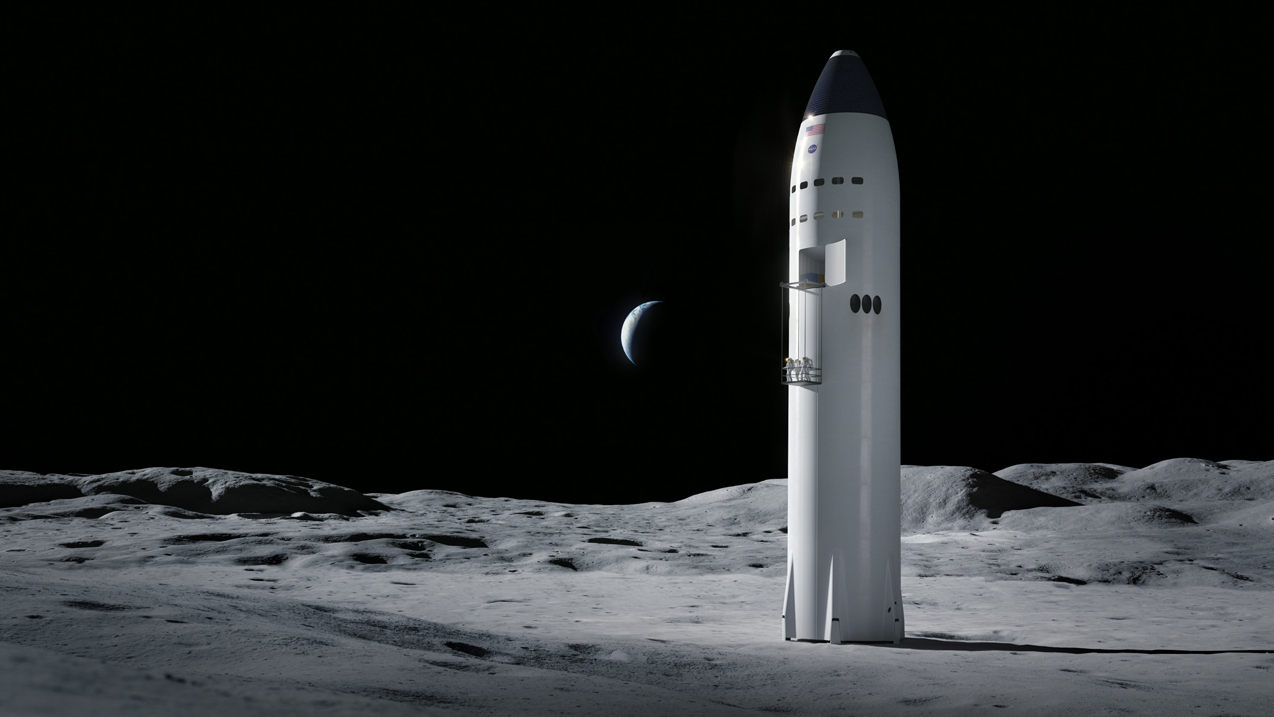
NASA has booked another crewed trip to the lunar surface with SpaceX.
In April 2021, NASA announced that it had selected SpaceX's next-generation Starship vehicle as the first crewed lunar lander for the agency's Artemis program of moon exploration. Starship will put astronauts down near the lunar south pole in 2025 on the Artemis 3 mission, if all goes according to plan.
In September of this year, NASA issued a call for proposals from other companies that want to provide crewed landers for Artemis, as a way to build up redundancy and resilience for the moon program.
SpaceX wasn't allowed to bid in this other round, but agency officials announced at the time that they planned to exercise an option in the company's existing contract to award future landed missions.
On Tuesday (Nov. 15), NASA officially invoked this "Option B," picking Starship to carry astronauts to the lunar surface on the Artemis 4 mission, which is targeted to fly in 2027.
Related: NASA's Artemis 1 moon mission: Live updates
Related: NASA's Artemis program of moon exploration
Much appreciated, SpaceX will not let NASA down!November 15, 2022
"Continuing our collaborative efforts with SpaceX through Option B furthers our resilient plans for regular crewed transportation to the lunar surface and establishing a long-term human presence under Artemis," Lisa Watson-Morgan, manager for the Human Landing System program at NASA's Marshall Space Flight Center in Huntsville, Alabama, said in a statement on Tuesday.
Get the Space.com Newsletter
Breaking space news, the latest updates on rocket launches, skywatching events and more!
"This critical work will help us focus on the development of sustainable, service-based lunar landers anchored to NASA's requirements for regularly recurring missions to the lunar surface," she added.
SpaceX founder and CEO Elon Musk was cheered by the news. "Much appreciated, SpaceX will not let NASA down!" the billionaire entrepreneur and new owner of Twitter tweeted on Tuesday.
Starship remains in development, though the huge vehicle could make a big leap soon: SpaceX is gearing up for the program's first-ever orbital test flight, which could lift off before the end of the year.
The Artemis program has an even bigger milestone on tap: The Artemis 1 mission is scheduled to launch early Wednesday morning (Nov. 16) from NASA's Kennedy Space Center in Florida. Liftoff will occur during a two-hour window that opens at 1:04 a.m. EST (0604 GMT), if all goes according to plan. You can watch it live here at Space.com.
Artemis 1 will use a Space Launch System (SLS) rocket to send an uncrewed Orion capsule on a 26-day journey to lunar orbit and back. The mission will be the first flight for the SLS and just the second for Orion, which reached Earth orbit in 2014 atop a United Launch Alliance Delta IV Heavy rocket.
If all goes well with Artemis 1, Artemis 2 will send a crewed Orion around the moon in 2024. Then will come Artemis 3, which will use Starship to make the first crewed lunar landing since the final Apollo mission in 1972.
Artemis 3 will actually be Starship's second moon landing; NASA wants the SpaceX vehicle to perform an uncrewed test touchdown before carrying astronauts to the lunar surface.
Mike Wall is the author of "Out There" (Grand Central Publishing, 2018; illustrated by Karl Tate), a book about the search for alien life. Follow him on Twitter @michaeldwall. Follow us on Twitter @Spacedotcom or on Facebook.
Join our Space Forums to keep talking space on the latest missions, night sky and more! And if you have a news tip, correction or comment, let us know at: community@space.com.

Michael Wall is a Senior Space Writer with Space.com and joined the team in 2010. He primarily covers exoplanets, spaceflight and military space, but has been known to dabble in the space art beat. His book about the search for alien life, "Out There," was published on Nov. 13, 2018. Before becoming a science writer, Michael worked as a herpetologist and wildlife biologist. He has a Ph.D. in evolutionary biology from the University of Sydney, Australia, a bachelor's degree from the University of Arizona, and a graduate certificate in science writing from the University of California, Santa Cruz. To find out what his latest project is, you can follow Michael on Twitter.









